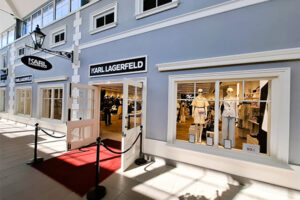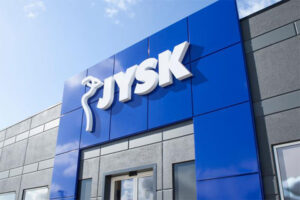BY JONATHAN DOUGHTY
At the GCSC event in Berlin in mid-September I will talk about the most recent foodservice trends as we see them at Coverpoint and how they are influencing, more than ever, the changes in the foodservice market. In the “old days,” trends used to be gentle movements in the market place.
Perhaps it was an increase in the money people spent on foodservice out of the home, or shorter time for lunch due to work pressures, but these were often gradual movements in behavior and choices, driven almost always by changes in work and family life.
Our latest “15 Foodservice Trends” are definitely not gentle! They are causing chaos and disruption in the world of foodservice and they are likely to continue to do so for some time to come. Some of the 15 trends will go quickly, others will be around for a while, so I think it is best to think about them like the weather. A bad storm comes and goes fast, creating havoc and then leaving. This is the way you should now be thinking about the trends that are changing foodservice.
One of the best examples is the “gourmetization” of food products. This reflects the fact that guests now demand much better quality ingredients, cooking, presentation, and service rather than the basic, standard foodservice product that has been around for years. Let us consider the beef burger. The iconic and staple food item for “fast food” since the mid 1950s, which has dominated the food courts and roadside restaurants around the world. The market was doing fine, growth for the big companies like McDonalds, Burger King, and Wendys was slow but steady and the “burger message” was being taken to new countries and new territories.
THEN IT HAPPENDED
Consumers, or “guests” as we like to call them, then started to look for “better burgers.” At that time, the market then offered really only two versions, the “fast food” and the “casual dining” burgers. One was €4 and the other was €15 from TGI Fridays or similar restaurants. There was nothing in the middle. Guests didn’t want to spend hours, didn’t want to spend €15, and didn’t want fancy service, but they wanted “better.”
Foodservice operators responded and very quickly we began to see one of the most important and growing trends – the “gourmetization” of the basic burger into a completely new category of foodservice that we like to call “fast casual.” Guests were looking for better. Better ingredients, better cooking, better environments to eat in, better service, and better satisfaction – and they were prepared to pay more for it!
Fast causal is now the fastest growing category in foodservice, although typically it is also the least provided for in shopping centers. In many ways, this is because there is a “time lag” from the trend appearing to the landlords and developers of Europe being able to react quickly enough to include it in the tenant mix. I guess that is why trend spotting is so important in our industry.
So, as the “better burger” category accelerated, the world of shopping started to embrace the operators from around Europe that wanted to offer this to their guests. Gourmet Burger Kitchen, Byron, Handmade Burger Co, Shake Shack, 5 Guys, Hans im Glück in Germany, H3 in Portugal, the list goes on and on. The number of newly announced operators that are coming into the market is beginning to make me wonder if we are going to see the top of the market sometime soon. My guess is that there is still a lot of growth in Europe, although there are some locations that are now fully provided in this category. We all rush together to ensure over-supply!
Don’t forget pizza, pasta, cake, and pastry
One thing we need to do is look at the dynamics of this trend and why it has the opportunity to run and run. First of all, we are only talking about burgers. There are many other product groups that can, and will, be “gourmetized.” We already believe the pizza and pasta market has been moving in that direction strongly for the last few years, as has cake and pastry. Secondly, guests are prepared to spend two or three times more money on one burger than they would in the traditional fast food operator like McDonalds. This is the perfect position for a landlord or developer, where you can take three times the money from the same customer.
Thirdly, guests are not spending three times the number of minutes in the restaurant, so the efficiency of the space is really good: seat turnover is really quick and spending is high. This translates to good turnover, good profitability, and good rent. In simple terms, we have taken low-spending consumers and tripled their spend while only increasing their dwell time by a little. A very good business model if you compare the “spend per minute” that comes from these new style “fast casual” restaurants.
So, disruption and chaos is around us in the foodservice world and we had better get used to it. For all the “winners” in this market, driven by the “gourmetization” trend, there will also be losers. The results for McDonalds speak for themselves, as their guests are leaving them to use other restaurants that offer a “gourmetized” product. It is enough to put them into negative figures, but we mustn’t forget that McDonalds and the other big fast food brands have enormous resources and a very large estate of operating units. They can change quickly, but they need to listen. In my view, the menu is too big, which has slowed the service down, some of the old shops need refitting, and they need to evolve their McCafe and other key differentiators to be successful again. I would also not be surprised if they looked at testing a “better burger” version of their brand. Maybe you will see a “Better M” store sometime soon! On a serious point, the “gourmetization” trend was emerging, but McDonalds didn’t see it or didn’t recognize it for what it was. It has caused disruption and chaos in their world.





